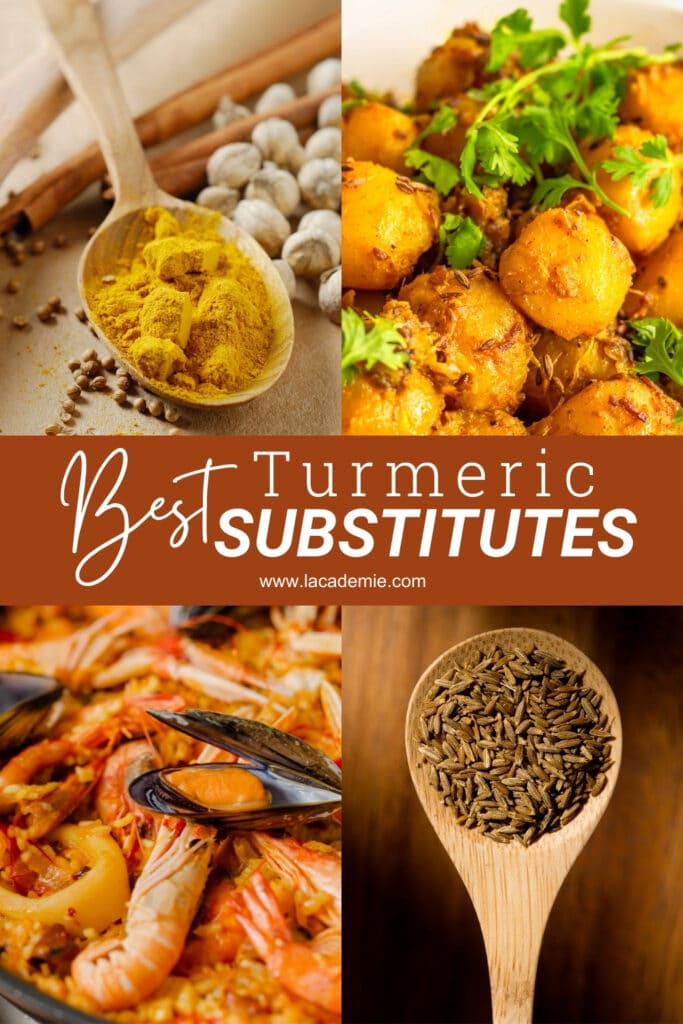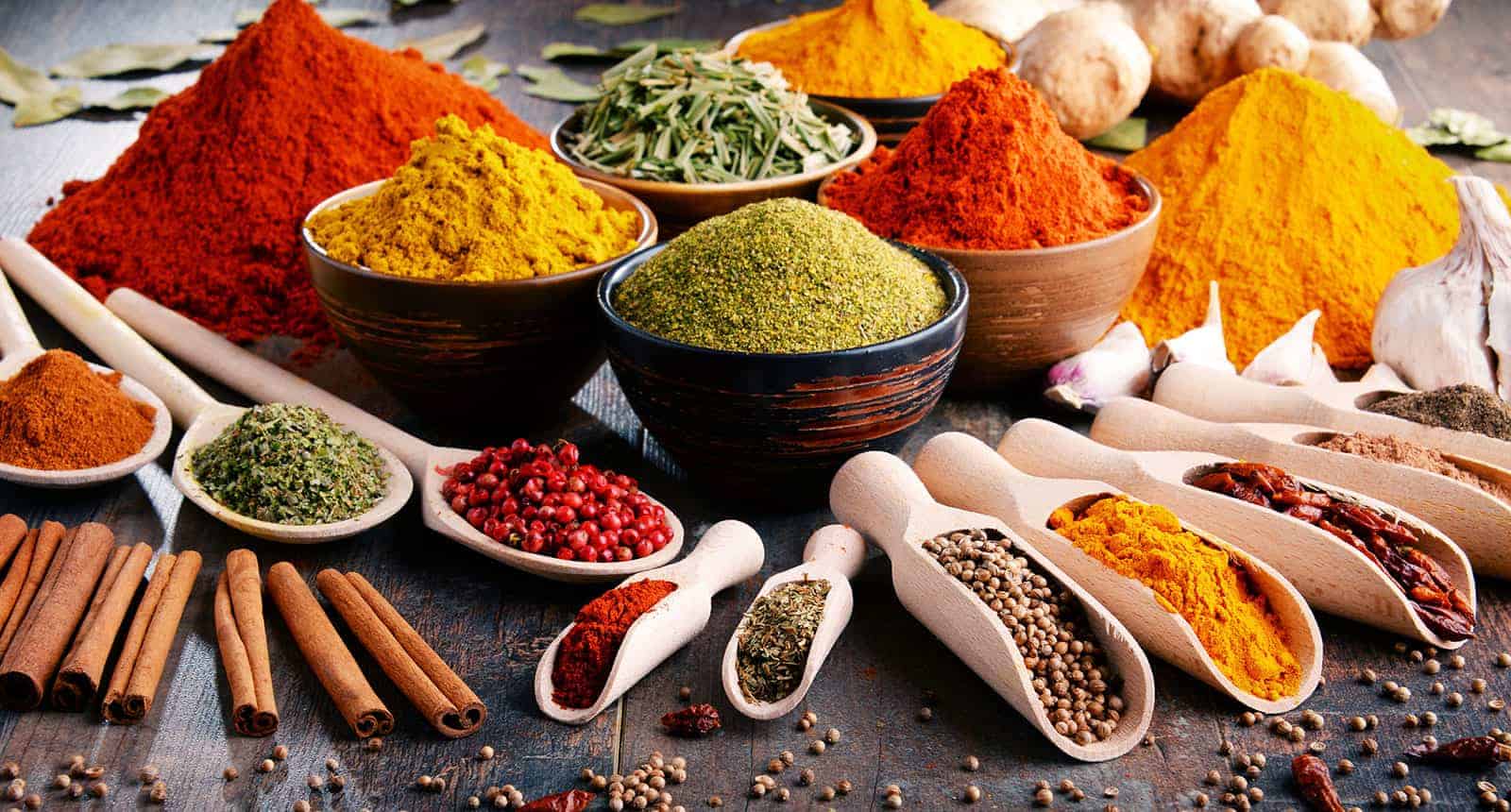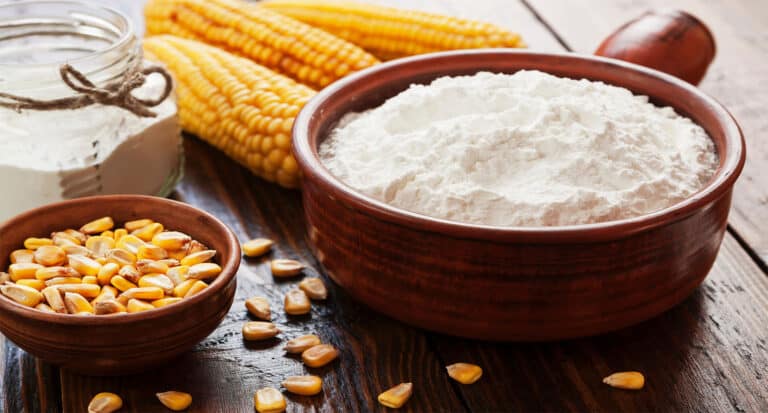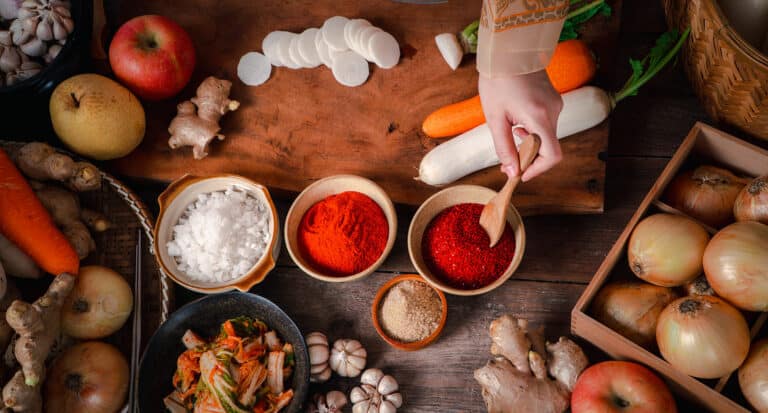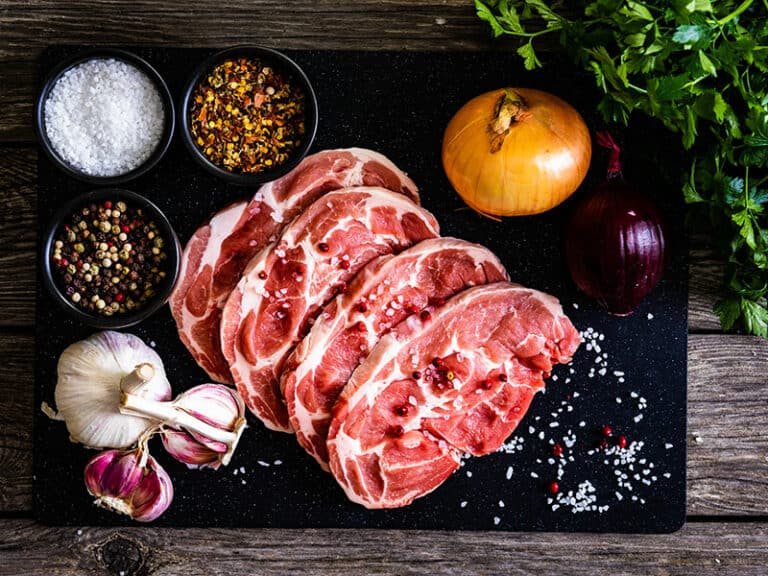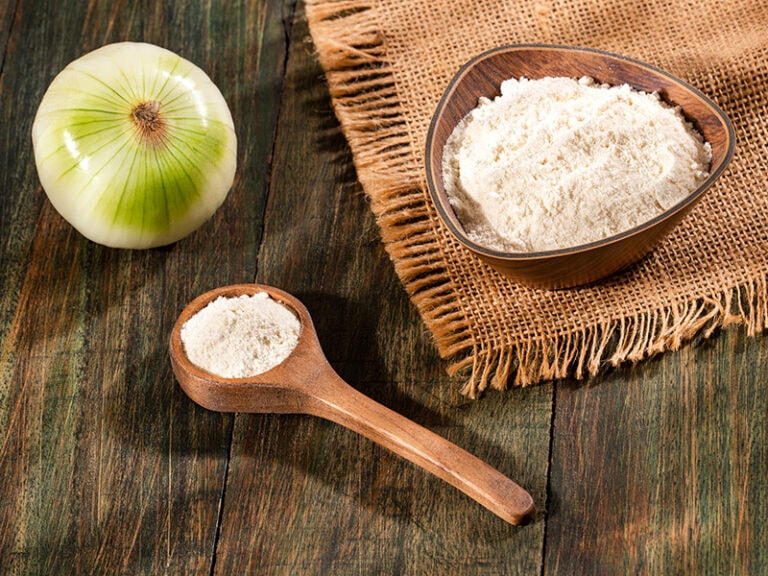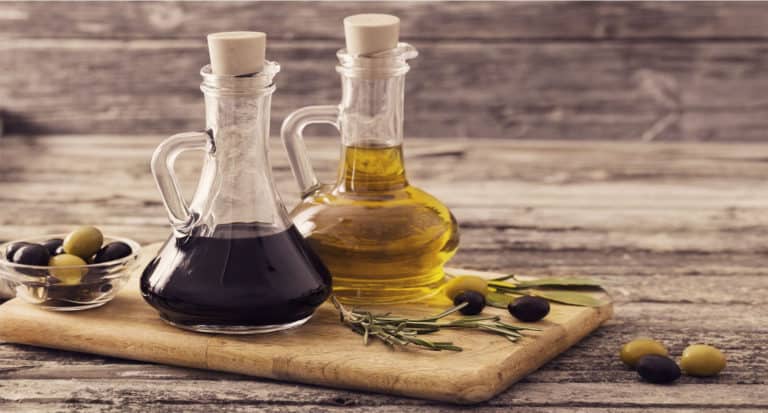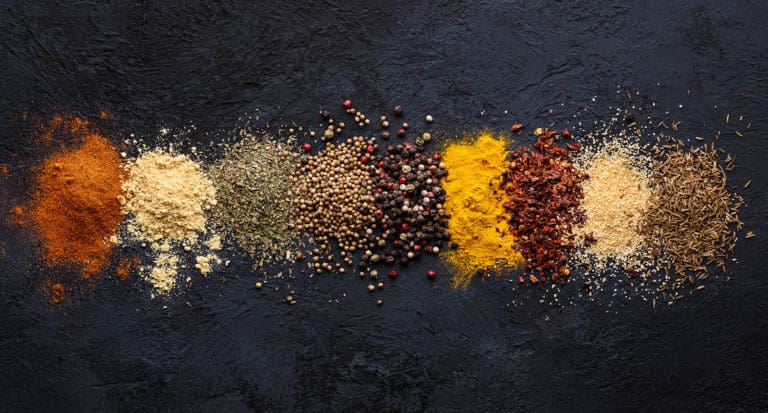Finding turmeric substitutes sounds like a difficult task because there are almost no other ingredients comparable to turmeric’s specific flavor, color, and health benefits.
However, if you happen to run out of turmeric when you are making your favorite dish, like Lebanese-originated desserts, and have no other choice, you can still freely choose from various substitute spices to spice up your dish.
However, you should be aware that these substitutes are not absolute and will only give you some turmeric features. For example, it can give your dish a beautiful turmeric yellow effect but cannot create that signature fragrance.
But you can still comfortably use more than one substitute for full flavor in some dishes. Plus, there are so many recipes in which turmeric only acts as a coloring aid or a little taste. Therefore, I will bring you the most impressive and closest turmeric substitutes for those cases.
You’ll get the right substitutes for turmeric-like colors, and more importantly, the best turmeric flavor substitutes through this article. So, do not ignore you!
What Is Turmeric?
Turmeric is a species of the ginger family, grown in many countries in tropical regions, which grows best in India. Plants are short in shape and often tend to grow in clusters next to each other.
When harvested, people will take the tubers to use. Turmeric has a thin orange-yellowish outer shell, a darker, fragrant inside, making it ideal as a galangal replacement. Turmeric leaves are green with symmetrical lines on both sides; stalks are quite long, from 50 to 115 cm.
Not only used as a seasoning for food, but turmeric is also considered a miraculous medicinal herb thanks to its possession of many healthy ingredients. Thus, many people also prefer to buy turmeric tea with high quality to benefit their bodies. If you haven’t tried these teas yet, give them a shot!
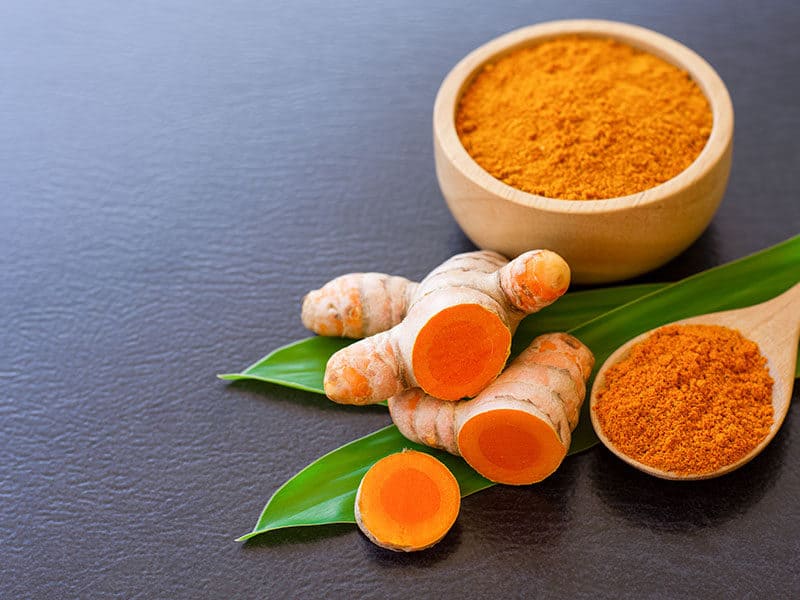
Turmeric Nutrition Facts
For your information, one tablespoon of turmeric powder contains:
29 calories
0.91 grams (g) of protein
0.31 g of fat
6.31 g of carbohydrates
2.1 g of fiber
0.3 g of sugar
That same 1-tbsp serving provides:
26 percent of daily manganese needs
16 percent of daily iron
5 percent of daily potassium
3 percent of daily vitamin C
(Source: USDA National Nutrient Database)
The Medicinal Properties of Turmeric
In turmeric, turmeric is the main ingredient contributing to the treatment of many diseases. Bulbs that grow in the roots have a small cylindrical shape that divides into many different branches.
Turmeric peel is slightly orange-brown, and the flesh is bright orange-yellow in color. Fresh turmeric will have a strong aroma, taste, bitterness, and taste.
According to experts, turmeric contains many ingredients that are beneficial to human health, most notably curcumin. This is a powerful antioxidant and anti-inflammatory.
Turmeric also provides many vitamins and minerals such as Vitamin C, K, E, Potassium, calcium, iron, and many antioxidants and anti-inflammatory substances.
Benefits of Turmeric
Turmeric is a natural ingredient widely used in life. Many studies show that turmeric is very good for the body. Here are some great uses that you should not ignore:
Treatment of Stomach Pain
Turmeric has hot, spicy properties that protect the stomach, destroy harmful bacteria, thereby effectively reducing stomach pain. Correct use of turmeric can help treat common digestive disorders, bloating, heartburn, and indigestion.
Reduce Arthritis
Turmeric not only contains curcumin but also contains many antioxidants and other types of inflammation. So the use of turmeric to support the treatment of arthritis will be more effective.
It is thought that curcumin is a powerful anti-inflammatory, which means that it may be helpful in arthritis. Many studies have clearly shown this.
In a study of patients with rheumatoid arthritis, curcumin was even more effective than other anti-inflammatory drugs.
Many other studies have looked at curcumin’s effects on arthritis and noted improvement in various symptoms.
Reduce the Risk of Cardiovascular Disease
Curcumin in turmeric helps reverse processes that can cause heart disease in humans. Curcumin active ingredients in turmeric can reduce cholesterol in the blood, thereby preventing the attack of both atherosclerosis and myocardial infarction.
Therefore, curcumin may help reverse many of the steps in the formation of heart disease. It also reduces inflammation and oxidation, which plays a very important role in cardiovascular disease.
In addition, vitamins and minerals such as potassium in turmeric help keep the heart healthy and stable.
Treatment of Coughs and Colds
Although a cold cough is a common condition for anyone, if you want to cure it in the shortest time, mix one tablespoon of turmeric powder with hot milk and drink it daily. This way will help your body be healthy and heal faster and even better than Western medicine.
Improve the Resistance
Turmeric can strengthen resistance. With a large amount of lipopolysaccharide present in turmeric, your resistance will be maximized, avoiding viruses, bacteria, fungi, etc., which are harmful to the body.
Prevent Cancer
Turmeric contains a large amount of curcumin – ingredients that are resistant to cancer-causing agents. That is why the incidence of cancer-related diseases in India is always much lower than in other countries because turmeric is a popular spice here.
Research scientists have found that curcumin is a medicinal herb useful in cancer prevention and treatment.
Studies have shown that turmeric can reduce blood vessel formation, the spread of cancer, as well as contribute to cancer cell destruction.
Supplementing from 1.5 to 2 grams of turmeric per day can help you strengthen your resistance while minimizing the mutated cells that cause cancer.
Prevent Skin Aging
Curcumin has a powerful antioxidant effect. It directly neutralizes free radicals, then stimulates the body’s antioxidant enzymes, thereby preventing pathogens and aging.
Turmeric contains vitamins such as C, E, K, along with curcumin, which will stimulate the production of new cells in place of old cells, destroy bacteria and harmful free radicals. As a result, it fights against aging, helping to make the skin more youthful and healthy.
You can mix your ideal pineapple juice with turmeric regularly to both improve flavor and get the effect.
Anti-Obesity
Turmeric is recommended for daily use for those at risk of obesity or already obese due to its effective fat burning and weight maintenance effects. Therefore, it would help if you practiced the habit of cooking with one teaspoon of turmeric in family meals to improve health.
Improve Brain Function
It was previously thought that nerve cells could not divide and multiply after childhood. However, this can actually happen. Nerve cells can form new connections, but in some areas of the brain, nerve cells can also multiply and multiply in number.
One of the main factors in this process is the brain-derived neurotrophic factor, a growth hormone in the brain. Many common brain disorders are associated with a drop in levels of this hormone.
Therefore, curcumin increases the concentration of a neurotrophic factor of brain origin, increases new nerve cells’ growth, and fights various degenerative processes in the brain.
Wound Healing and Scar Treatment
Turmeric has very good antibacterial properties, so it is extremely effective in wound healing. If you are injured or burned, turmeric can be applied to the area to speed up the healing process, help regenerate the skin, prevent scarring.
Reduce Liver Disease
According to doctors, this is the food that stimulates the liver to produce many enzymes – these are the enzymes help the liver to detox effectively and quickly.
Prevent Alzheimer’s Disease
Curcumin can cross the blood-brain barrier. On the other hand, it is a potent anti-inflammatory and antioxidant agent, two conditions that play a key role in Alzheimer’s disease.
Furthermore, an important feature of Alzheimer’s disease is an accumulation of protein tangles called amyloid plaques. Curcumin can help clear these plaques, according to many studies.
Turmeric’s Flavor Substitutes
Turmeric has amazing health benefits. But what if you don’t have turmeric and need a perfect substitute for your food? Knowing which ingredients are good to substitute for turmeric will equip you with the knowledge to cope with the need to use in your recipes!
Therefore, please continue to see what those spices are below. I divided them into two groups: flavor substitute and color substitute to find your needs easily.
If you don’t take the color too seriously, focus on the flavor. Here are some spices that give the most turmeric-like flavor after cooking:
Curry Powder
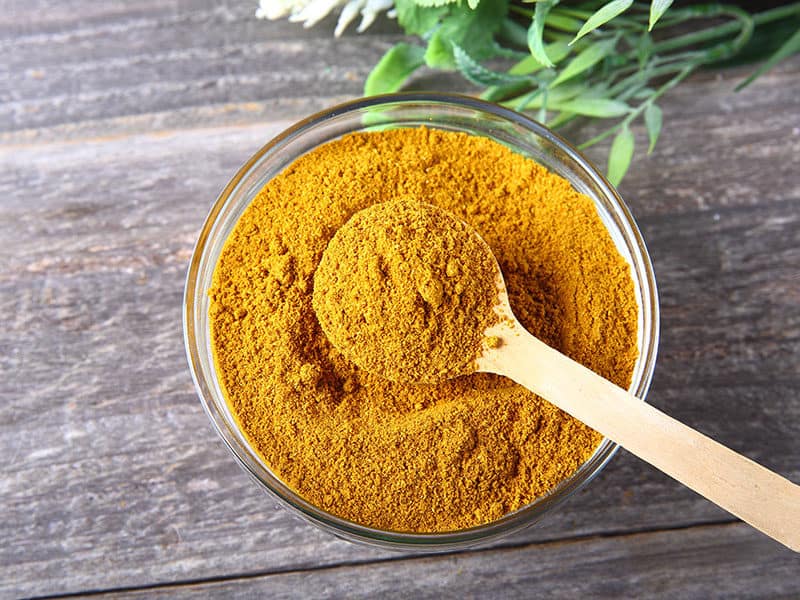
Turmeric is one of the main spices in curry powder. Curry powder is a mixture of spices with bright yellow color and a wide variety of flavors. It can be flavored with various spices, including coriander, dill, pecans, and chili.
Traditionally, curry powder is used intact or ground, cooked or raw, and they can be added at different times in the cooking process to produce different results. Curry dishes are prepared in the form of water, dry, or sauce.
Curry dishes are prepared with various food sources such as beef, chicken, goat, lamb, seafood, and even vegetarians can enjoy curry if you change one—number of ingredients from meat to plants.
Moreover, like turmeric, curry powder is also effective in healing wounds and antioxidants. Like mustard seeds, it is effective in preventing cancer and stimulating digestion. Curry powder also reduces pain and fights congestion and stomach ulcers while also boosting heart health.
Cumin
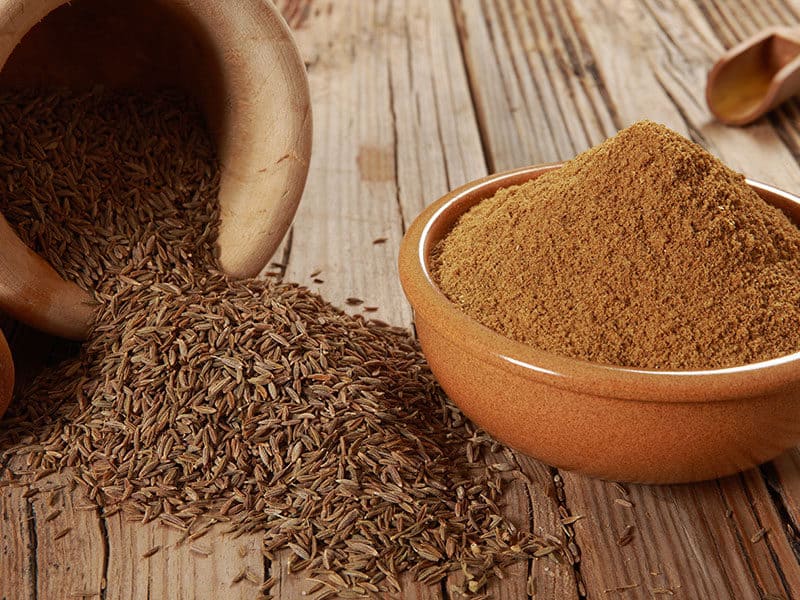
It is no coincidence that cumin is one of the key ingredients in Middle Eastern cuisine. Cumin has a very good flavoring and coloring effect as a substitute for turmeric, suitable for many raw materials.
So what is the real flavor of cumin that makes them an ideal replacement of turmeric? Chefs use cumin’s typical turmeric-like aroma as the main seasoning in dishes such as curry, salad, taco, enchilada, etc. Cumin is also used to make dipping sauces richer.
Regardless of what cumin type you’re choosing, cumin brings delicious taste to dishes and is a kind of “miracle” very good for health. Cumin powder can be used to treat gastrointestinal ailments such as diarrhea, indigestion, flatulence, etc.
Moreover, cumin helps in treating hoarseness and stimulates taste buds, very useful for people with anorexia. Drinking water made from Cumin helps your sleep better, prevents the common cold, and loses weight very effectively.
Gaham Masala
Gaham Masala is a major spice mixture used in the cooking process in the Punjab region of northern India with a taste similar to turmeric. Garam Masala can be used alone or mixed with other spices during processing.
A pleasant surprise is that, in fact, there is no single garam masala recipe. The ingredients in the mixture will vary according to the region as well as the individual preferences of each chef. But usually, garam masala will include coriander, dill, cardamom, cloves, black pepper, cinnamon, and nutmeg.
Garam Masala is added to dishes long before serving to enhance seasoning. Garam Masala is also a great marinade for chicken or beef.
This is also a mixture of spices prepared to put in the curry pot. It does not need to be too fussy but still creates the characteristic flavor of Indian curry. It brings an impression for the diners of a passionate dish. As soon as you touch the tip of the tongue, the aftertaste will not fade in your mouth.
Ginger
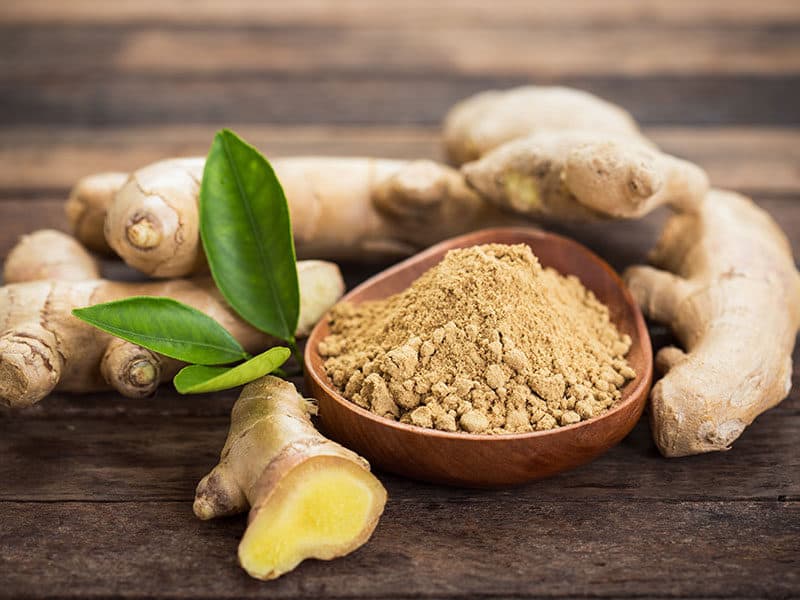
A famous relative of turmeric is ginger. Ginger is a popular spice in cooking, but depending on the type of dish, use each type of ginger to suit. How to properly substitute turmeric with ginger, including ginger, ginger jam, and ginger powder?
With its fresh form, ginger has a characteristic strong aroma, making soups, sauces, stews, and stir-fries more delicious and attractive. Just rub ginger on a grating knife to thin the ginger, helping to increase the dish’s flavor.
To quickly blend the ginger with other foods, you can rub it into a knife, crush it or slice it thinly. Thin slicing ginger will reduce the strong taste of the ginger, and you can easily remove the ginger before serving.
People often use ginger powder for baking the most because the amount of flour used is not much, and it will not increase the amount of liquid, will not change the recipe and the flavor of the dish.
Note that you should not use too much ginger powder when cooking, as it tastes spicier than fresh ginger, and if you use too much, it tends to add a bitter taste to the dish.
Turmeric’s Color Substitutes
As for a dish that requires turmeric’s distinctive colors to become true, you can use some relatively natural coloring ingredients like turmeric as follows:
Annatto
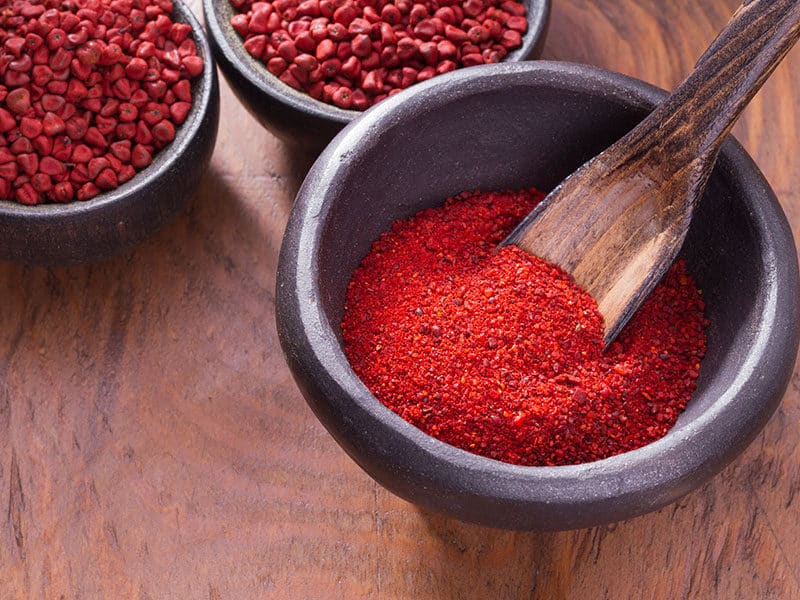
Annatto gives a bright reddish-yellow color that has long been used as a food colorant. Like paprika, saffron, and turmeric, a dye can give foods a bright color, from yellow to deep orange.
This is a very safe substitute for turmeric. It has a slightly sweet taste and has a mild pungent odor. Besides, it also contains healthful nutrients comparable to turmeric.
The color of the dye comes from carotenoids – plant pigments found in the seed coating. This coating is usually ground into a powder or paste for use. This dye can also be extracted from the seed and then added to foods as a pigment.
People also use dyes as a spice to increase the flavor of some dishes. The dye’s aroma is described as “mildly spicy with a faint nutmeg flavor” and “a bit like hazelnut, sweet and spicy”.
That’s why many connoisseurs have put this nut in their dishes to make a difference, especially the dishes that need to achieve the perfect color and taste like curry.
Furthermore, annatto is especially good for dairy foods like cheese, butter, dry foods like chips, breakfast cereals, smoked fish, and is especially used in baking for safe coloring.
Saffron
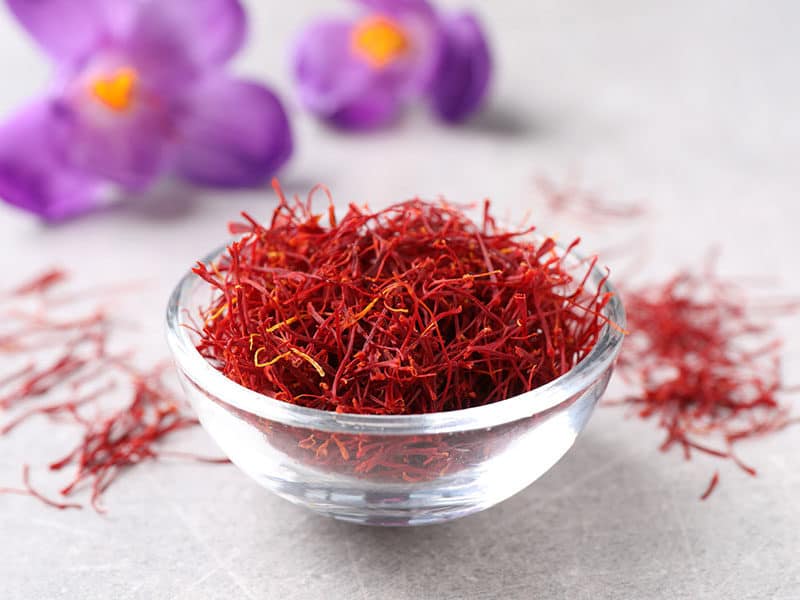
Each saffron plant has about 2-3 purple flowers. Each flower has about 3 crimson red stamens. This is also the part called the saffron.
In fact, you can use turmeric in place of saffron too. Saffron is red. After preliminary processing and drying for storage, it turns red-brown. It is widely used in food processing and has a slightly bitter taste. It is also used as a colorant in some ginger teas.
This ingredient produces a yellow-orange color similar to turmeric, making it a great substitute for turmeric’s coloring with marinated foods.
With its vibrant golden color, sweet herbal aroma, only a small amount of Saffron is needed; the dish will have an eye-catching golden color and characteristic flavor.
This is considered an indispensable spice in casseroles, curries, etc., and often skillful chefs combine with many ingredients to create other attractive dishes.
Besides, their scent is quite similar to that of hay. Just a very small amount, Saffron also has a great effect in creating the flavor, increasing the flavor and appeal of the dish.
Paprika

Paprika is a Hungarian chili powder. Paprika is made from dried, finely ground Capsicum chili; they have dark skin, the spicy taste of Paprika ranges from mildly sweet to medium and hot spicy.
You can use Paprika to replace turmeric. It gives a beautiful color and adds an impressive spicy and sweet flavor to stews, soups, and soups.
You can sprinkle Paprika on top of dishes to create beautiful color and impressive sweet, spicy taste or use it to marinate meat and fish before processing. Especially if you cook Paprika in a pan of oil, it will create a more delicious and rich flavor.
Paprika also contains vitamins C, B2, B6, A, E, niacin, calcium, potassium, phosphorus, fiber, beta carotene, and bioflavonoids that have powerful antioxidants, anti-cancer, and support the formation of bones. The nerves, nerves, and muscles simultaneously support digestion by stimulating the stomach and bile.
Mustard
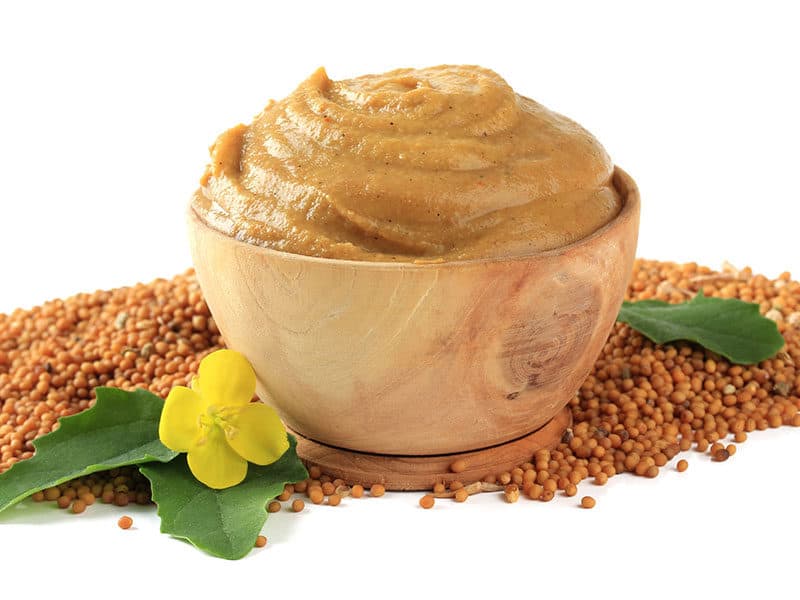
You can find mustards in the many recipes that canned baked beans on the market today to give products a more beautiful and attractive yellow color. Regarding the possibility of mustard going bad, you can rest assured that this is a condiment that can last for a very long time.
The common versions of mustard are made from the seeds of several plants of the Brassica genus. It is processed to have a bright yellow color like turmeric. You can use it as a substitute color spice for turmeric.
Mustard is commonly used to serve sausages, sandwiches, cookies, and hamburgers. It is also an ingredient in many soups, such as potato soups, meat sauces, and salad dressings.
You do it by crushing the mustard seeds and then mixing them with water, vinegar, or other liquid, into yellow-brown pastes.
This is the main spice that creates aroma for the chefs’ dishes in ancient Europe until the cultural exchange with Asian countries.
FAQs
Here are some commonly asked questions about turmeric and its substitutes that you may also ask. Please refer to the answer:
Expectation And Reality
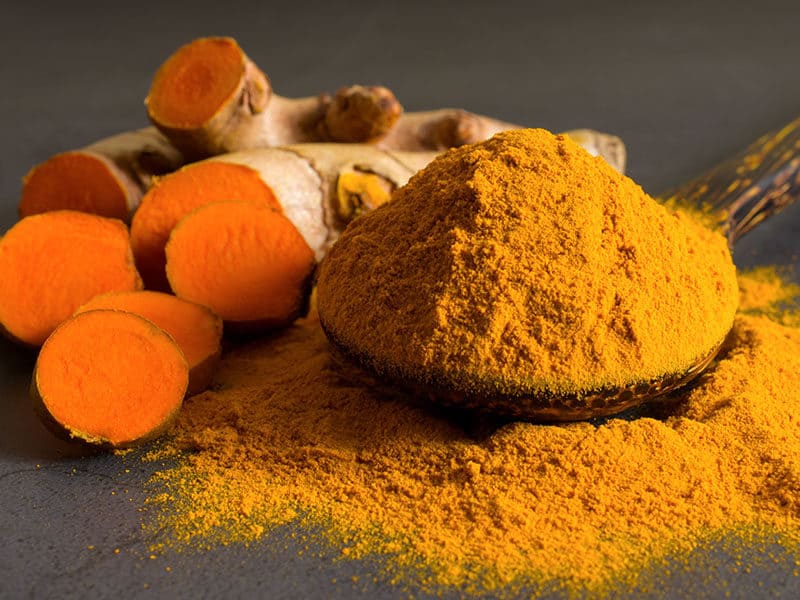
Before you have a headache about whether the seasoning is the right and appropriate substitute for turmeric, take a moment to wonder if it is necessary to do so. Take your dish to the next level with the rich, hot addition of turmeric and a substitute that may disappoint.
Since some dishes require real turmeric, any replacement would be lame. Those recipes use turmeric as the main seasoning for a dish, mainly based on turmeric’s characteristic flavor. If this is the case, you should go buy turmeric or wait until you have it on hand.
If your dish is fine without turmeric, then feel free to replace it with similar things. You should also pay attention to whether the ingredients you are going to substitute for turmeric affect the flavor and vibe of your dish.
For example, in the case of force majeure, when you need to immediately cook a dish that requires turmeric and has no turmeric in hand, you can apply the spices that I have suggested for you in this article. And don’t forget, you are free to combine two or more spices for perfection!
I hope my article has given you more knowledge and helped you choose a suitable spice for turmeric. Please share and comment below on the article if you find it useful!
Nutrition Facts
1 servings per container
- Amount Per ServingCalories6.5
- % Daily Value *
- Total Fat
0.3g
0%
- Sodium 1mg 1%
- Potassium 23mg 1%
- Total Carbohydrate
1.1g
1%
- Dietary Fiber 1.1g 4%
- Sugars 0.1g
- Protein 0.3g 0%
- Calcium 11%
- Iron 0.4%
* The % Daily Value tells you how much a nutrient in a serving of food contributes to a daily diet. 2,000 calories a day is used for general nutrition advice.
